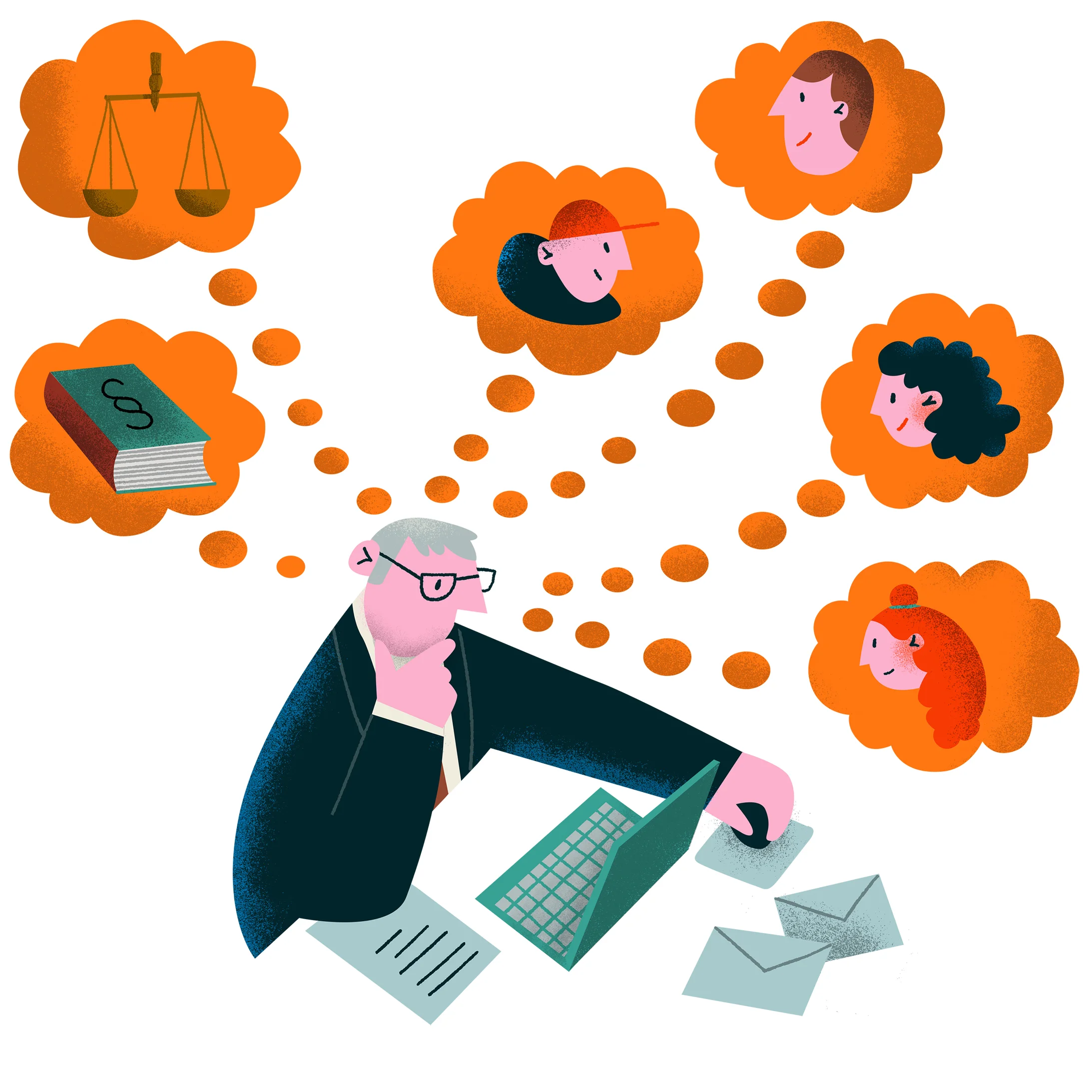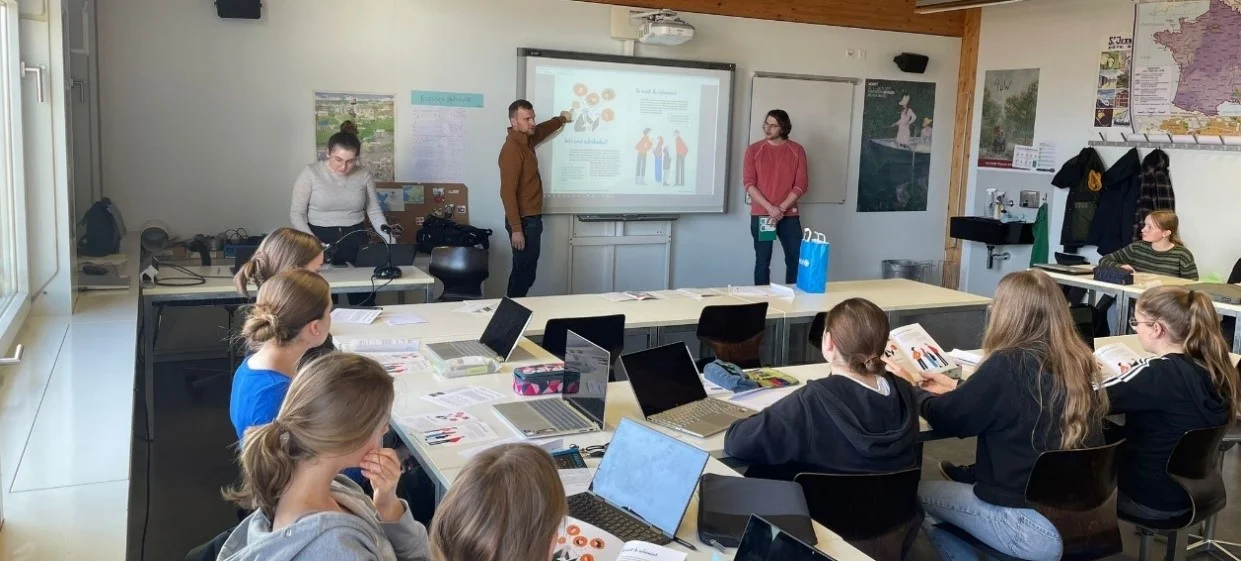Children and young people are far too rarely involved in the development of products that are intended for them. For UNICEF Switzerland and Liechtenstein, their participation is a top priority. In this blog post, we will present the sounding board approach: five steps to get children involved in your project.
Children and young people know best what they like and what they don’t like. They know which words they understand and which ones confuse them. No one knows the environment they live in as well as they do. That is why involving children and young people can provide important insights. A fundamental principle of the Convention on the Rights of the Child is the right to participation. So when we involve young people, we are not only doing ourselves a favor, but first and foremost we are granting them their rights.
One straightforward way to involve children and young people is to conduct a sounding board exercise, which involves asking children and young people for feedback on a product.
UNICEF Switzerland and Liechtenstein’s approach
The UNICEF information brochure “Your opinion counts. All you need to know about child hearings in civil proceedings” (DE) provides a step-by-step explanation for children and young people on what a child hearing is and how it works. As the hearings usually concern difficult topics, such as divorce or child protection issues, we wanted to ensure that the brochure provided sensitive but also honest information on the subject. That is why we conducted a sounding board exercise with children and young people during the writing process.
Step 1: Planning
The first step is to define which children and young people are the target group for the product and what expectations you have of them. What needs to be considered is how this target group can be reached. Suitable methods are then selected for collecting the opinions of children and young people and incorporating them into the product. For example, a questionnaire and/or a personal interview may be appropriate depending on the product and the target group.
It is essential that the children and young people are protected: What are the potential risks and how can they be minimized? Such considerations take priority when working with children and young people, and must always be taken into account.
UNICEF Switzerland and Liechtenstein’s approach
UNICEF’s brochure on child hearings is aimed at children and young people between the ages of 6 and 18. We used the sounding board exercise to find out whether the texts and pictures are understandable for this target group and where any difficulties might arise.

Figure 2: A sample image from our brochure
“In the picture where there’s a man with a computer, I don’t know what the symbol in the speech bubble on the left means”
In order to cover the broad age range of the target group, we decided to work with school classes of different grades. We divided the sounding board exercise into two phases: The children and young people first completed a questionnaire about the brochure, then we conducted personal interviews in their classes.
Step 2: Preparation
The following questions need to be addressed in advance:
- How do children and young people come into contact with the product? To achieve the most authentic result possible, the material should be presented in the format that children and young people will actually end up using it. This means that a brochure should be in printed form, while an app should be made available digitally.
- How do I communicate with the children and young people? Age-appropriate language and preparation are important. For a face-to-face visit, the process needs to be planned and talked through with caregivers so that the children and young people can be prepared accordingly.
- How do I get results that I can use? There is a choice to be made between open-ended or multiple-choice questions. Answers should be collected in such a way that they can easily be incorporated into further work.
- How do I ensure the children are protected? It is important to take appropriate precautions: You have to be aware that children and young people may share personal experiences during a sounding board exercise, and you need to know how to handle this. Participation must always be voluntary. Parents must be informed, and asked for their consent where necessary.
UNICEF Switzerland and Liechtenstein’s approach
We were able to recruit classes from primary school through to cantonal school for our sounding board exercise and thus reach a diverse group of participants. We sent the brochures to the children and young people via their teachers. We also included an information letter to parents, a consent form and a brief questionnaire about the brochure for the children and young people to complete.
We also made sure that child protection aspects were considered right from the outset: A risk assessment was carried out, the sounding board exercise was always conducted by two adults, parents and guardians were involved, participation was voluntary and contact persons were defined.
Step 3: Implementation
When conducting a sounding board exercise in person or online with face-to-face contact, it is important to make yourself as accessible as possible to the children and young people and not to overwhelm them, and also to ensure their safety and consent. You should start by clearly communicating why you are there, the valuable contribution that the children and young people present will make to the product, and what will happen with their feedback. The program should be varied and interactive. It is useful to ask a mixture of open-ended and closed questions, and to follow up on anything that is unclear.
UNICEF Switzerland and Liechtenstein’s approach
For our classroom visits, after a brief introduction we divided the students into small groups so they could discuss the brochures among themselves. This gave many of them the courage to share their opinions with us more clearly and honestly, as they encouraged each other to join in the discussion. By filling out the questionnaire in advance, children and young people who did not want to talk during the group session were still able to share their views with us.
We recognized that the topic of child hearings in civil law could be sensitive and therefore a potential risk for the children and young people, since many are themselves affected by divorce, violence and neglect. We felt it was important to stress that participation in the sounding board exercise was voluntary. If the teacher did not remain in the room, students were informed where they had gone to.
Figure 3: Sounding board exercise at a school with UNICEF Switzerland and Liechtenstein
Step 4: Incorporating feedback
Following the sounding board exercise, the responses received from the children and young people are incorporated into the project. It is helpful to sort through the feedback and suggestions for improvement in order to gain an overview. The aim is to find out how many children had issues with specific aspects of the product, and how pressing the need for any changes might be.
For products aimed at children and young people with different group characteristics, such as age, it is important to weigh feedback accordingly. What works for one group may not appeal to another. Ultimately, however, product managers need to weigh up and decide what feedback should be included and what should not.
UNICEF Switzerland and Liechtenstein’s approach
Since our information brochure on child hearings is aimed at young people between the ages of 6 and 18, we tried to cover this age range with our sounding board exercise. In evaluating the feedback, we prioritized different aspects for the different age groups. For younger children, the most important thing for us was that they understood the pictures in the brochure and the parts of the text highlighted in speech bubbles. For the older participants, we also paid particular attention to the information content and the wording chosen.
Step 5: Optimization and further development
Practice makes perfect. Every sounding board exercise has potential for improvement. What worked well, and what could have been done differently? If you run through each step of the process again and compare it against your expectations at the beginning, you can see what could be optimized. By evaluating the process, you can improve future sounding board exercises and reduce your workload.
UNICEF Switzerland and Liechtenstein’s approach
From our sounding board exercise, we learned that it’s best to talk to younger children in a smaller, face-to-face setting. We had planned to interview an entire grade two class, but were only able to talk to a small group. This turned out to be a stroke of good fortune. It allowed us to examine the content in more depth, as these younger children were not yet able to express themselves quite as clearly. As a result, we gained better insights with the same time budget than if we had interviewed an entire class.
Involving children and young people has made UNICEF Switzerland and Liechtenstein’s publication markedly more child-friendly and accessible, and we look forward to all future sounding board exercises, a practice we highly recommend.
If you would like more information about our work in Switzerland and Liechtenstein, please visit our website and sign up for our Children’s Rights Newsletter.
